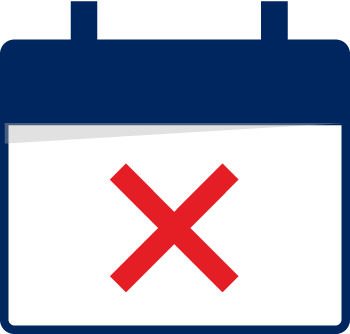How to Apply for an Insurance Exception For Type 1 Diabetes Issues
In a perfect world, we would never have to worry about whether a prescription medicine or treatment we rely on is included in our insurance coverage. In reality, however, there are times when your insurance company may not include your insulin, preferred insulin pump, continuous glucose monitor (CGM) or other treatments. That does not mean, however, that you should give up on the idea of these eventually being covered. In this section, we’ll provide information on how to make requests (called exception requests) of your health insurance company to cover these products. We have also provided some sample letters to help get you started. There are no guarantees, but many people with type 1 diabetes (T1D) have been successfully granted exceptions that allow them access to their preferred or needed treatment.
In this section we’ll discuss
What’s an Exception for T1D Issues?
During the course of your treatment for T1D, you may find that your insulin, insulin pump, CGM or other treatment is not covered by your plan. In this case, you or your doctor can write an exception request prior to obtaining the medicine, device or service to your insurance company requesting that your prescription or treatment be covered. Often, the manufacturer of your device or drug will also be available to help you access your needed treatment.
How do I know if I need an exception before treatment?
When your doctor recommends a type of insulin, insulin pump, CGM or other treatment, first check your insurance plan details or call the number on the back of your insurance card to see if it is covered. If you find it is not, you’ll want to request that your insurance company cover it through their exception request process. Unlike an appeal, this process begins before you’ve even received the treatment, whereas with an appeal, you’re already received treatment and a denial for that service being covered.
“I think exceptions are probably less commonly used by patients than other tools, like an appeal when a service is denied. But it’s helpful to know that it is possible to request an exception and receive one. It’s worth considering, especially if your doctor feels strongly that you need a specific treatment.”
—T1D patient, CA
How Do You Submit an Exception Request?
- Check your plan’s policy documents and formulary to see if any of your treatments are not covered. You may find this information on your plan’s website. If you have Medicare coverage, check your Medicare & You handbook for more information.
- Contact your doctor—or the individual at your doctor’s office designated to handle exceptions—to develop and submit this request. You should also contact the company that makes your device or drug. Many companies have phone numbers or websites that have information about helping you apply for an exception. They are familiar with this process and can help guide you and your doctor’s office through You may also submit a letter to your insurance company along with the one from your doctor. The two letters should be similar and include some key points to help increase the likelihood of receiving an approval. See the section below for some helpful tips!
- If you would like to submit an exception request, locate the exception process for your plan. This is typically available on your plan’s website, or you can call your plan’s member services phone number, which is found on your insurance card. Make sure you understand:
- If a form is needed. Some plans may provide a form to complete and submit, while others will accept a written letter. Make sure to use the form if it is provided.
- The timing for filing an exception request and the expected time frame for your plan to respond with either an approval or denial of your request.
- Where to submit the request once you’re ready. *If you have Medicare or Medicaid, this information may be in a different location. For Medicare enrollees, this can be found in your Medicare & You handbook, or in your plan’s Evidence of Coverage document.
- Ensure the exception is submitted according to the guidelines, if any were provided, and double-check that you meet all requirements before submitting.
- Before you send the request, make a copy for your files.
- Once your request is submitted, your insurance company may approve the request or deny it. If it is approved, you will be able to receive the requested treatment as a covered service. If your request is denied, you will need to decide whether to pay the full cost of the treatment or try an alternative treatment that is covered. You may also decide to appeal the decision after obtaining the treatment. See more details on this in “Denials and Appeals” section.
Helpful Tips for Successfully Obtaining a T1D Insurance Exception
Work together
 Work together to write the letter.
Work together to write the letter.
- Ask your doctor what has worked in the past and if they know of success stories of similar patients. If so, consider using those same approaches in your request.
- Your doctor likely has an existing process they follow and knows the typical steps to take. You may find those details helpful in understanding the next steps and likelihood of success.
- The manufacturer of the drug or device likely has someone that can help guide you through the process.
Include backup information to support your request. Insurance companies make decisions based on data and research. Including some supporting information on why you should be considered for an exception will help strengthen your case. This is important if your plan does not cover a particular medication or treatment at all, such as with a CGM or preventative treatment, or if the plan does not cover your particular brand of medicine or treatment. Here are some examples of information that may help you demonstrate that your request is medically necessary:
- Rationale for your request stating what the medication or treatment is and why it is needed.
- U.S. Food and Drug Administration (FDA) approval date of desired drug or treatment.
- Clinical guidelines that support the request. Organizations like the American Association of Clinical Endocrinologists, the American Diabetes Association, and the Endocrine Society publish guidelines for effective treatment and management of T1D. Also, a peer-reviewed paper could be helpful in supporting your discussion on insulin pumps and CGMs. Your doctor may be able to help you find peer-reviewed literature specific to your situation. You can also search for articles yourself using the PubMed database and other online sources.
- Your hemoglobin A1C (HbA1c) value (current or historical if it has increased) and how the desired alternative will help improve this value.
- A brief description of your daily T1D management routine, such as the number of finger stick tests, insulin injections or pump uses every day. This detail should also include how the desired medication or treatment will improve your health by making it easier for you to manage and adhere to your treatment plan.
- Evidence of using the covered drug or treatment. For example, some plans may require that you have tried the covered insulin first (and require evidence that your T1D worsened under the covered brand) before approving coverage for the requested brand.
 Be mindful of timing
Be mindful of timing
- It is a good idea to ask that it be approved for the full extent of your time as a member of the plan, if possible. If your policy does not allow that, request it be approved for the rest of the year to avoid having to repeat the process often.
- Exceptions can be granted in advance or after treatment is given, so consider whether you
are comfortable waiting for the process to be resolved. Depending on your circumstances, you may not have time to wait for your health insurance company to approve the exception before getting treatment or medication. Some patients may decide to take the risk and get services before the request is approved. Before you take this route, here are a few things you’ll want to understand.- Consider a 27-year-old female T1D patient who has been managing her condition for two years. She and her doctor determine that she needs a CGM. She gets a prescription for the CGM, but finds out it is not covered. She then has two options:
| SHE SEEKS AN EXCEPTION BEFORE GETTING THE CGM | SHE GETS THE CGM BEFORE GETTING APPROVAL | |
|---|---|---|
| COST | The cost of the CGM is shared with the insurance company if the exception is approved. If she has concerns about being able to afford the out-of-pocket cost of the CGM, she may decide to seek an exception to ensure it can be covered by her plan. | She pays in full up front, with potential for some reimbursement from the insurance company. This could be appropriate if she can afford the CGM at full cost without her plan covering it. If the appeal is approved, the insurance company still may not cover the entire cost of the CGM. |
| SEVERITY OR NEED | Treatment is delayed If she does not urgently need the CGM and can safely delay treatment, she may have time to wait for the exception to be approved by her insurance company before purchasing the CGM. In some rare cases, a doctor will have free samples of a brand-name drug that can be provided temporarily while the request is being reviewed. |
Treatment is received more quickly If her condition will worsen if she does not begin treatment with a CGM soon, she may need to buy the CGM and work with the insurance company after the fact to get reimbursed, or appeal the insurer’s decision to not cover it. In this case, she will want to have backup options to pay for the treatment out of pocket. |
JDRF maintains a forum where insurance issues can be discussed.
If you have questions for the community, you can post them here!
Is this resource helpful? Did we miss something? Let us know!